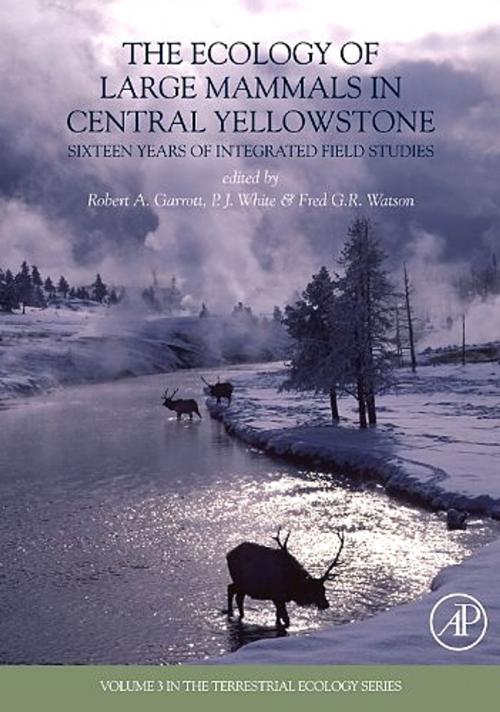The Ecology of Large Mammals in Central Yellowstone
Sixteen Years of Integrated Field Studies
Nonfiction, Science & Nature, Science, Biological Sciences, Ecology, Zoology| Author: | ISBN: | 9780080921051 | |
| Publisher: | Elsevier Science | Publication: | November 25, 2008 |
| Imprint: | Academic Press | Language: | English |
| Author: | |
| ISBN: | 9780080921051 |
| Publisher: | Elsevier Science |
| Publication: | November 25, 2008 |
| Imprint: | Academic Press |
| Language: | English |
This book is an authoritative work on the ecology of some of America’s most iconic large mammals in a natural environment - and of the interplay between climate, landscape, and animals in the interior of the world’s first and most famous national park.
Central Yellowstone includes the range of one of the largest migratory populations of bison in North America as well as a unique elk herd that remains in the park year round. These populations live in a varied landscape with seasonal and often extreme patterns of climate and food abundance. The reintroduction of wolves into the park a decade ago resulted in scientific and public controversy about the effect of large predators on their prey, a debate closely examined in the book.
Introductory chapters describe the geography, geology and vegetation of the ecosystem. The elk and bison are then introduced and their population ecology described both pre- and post– wolf introduction, enabling valuable insights into the demographic and behavioral consequences for their ungulate prey. Subsequent chapters describe the wildlife-human interactions and show how scientific research can inform the debate and policy issues surrounding winter recreation in Yellowstone. The book closes with a discussion of how this ecological knowledge can be used to educate the public, both about Yellowstone itself and about science, ecology and the environment in general.
Yellowstone National Park exemplifies some of the currently most hotly debated and high-profile ecological, wildlife management, and environmental policy issues and this book will have broad appeal not only to academic ecologists, but also to natural resource students, managers, biologists, policy makers, administrators and the general public.
* Unrivalled descriptions of ecological processes in a world famous ecosystem, based on information from 16 years of painstaking field work and collaborations among 66 scientists and technical experts and 15 graduate studies.
* Detailed studies of two charismatic North American herbivore species – elk and bison
* Description of the restoration of wolves into central Yellowstone and their ecological interactions with their elk and bison prey
* Illustrated with numerous evocative colour photographs and stunning maps
This book is an authoritative work on the ecology of some of America’s most iconic large mammals in a natural environment - and of the interplay between climate, landscape, and animals in the interior of the world’s first and most famous national park.
Central Yellowstone includes the range of one of the largest migratory populations of bison in North America as well as a unique elk herd that remains in the park year round. These populations live in a varied landscape with seasonal and often extreme patterns of climate and food abundance. The reintroduction of wolves into the park a decade ago resulted in scientific and public controversy about the effect of large predators on their prey, a debate closely examined in the book.
Introductory chapters describe the geography, geology and vegetation of the ecosystem. The elk and bison are then introduced and their population ecology described both pre- and post– wolf introduction, enabling valuable insights into the demographic and behavioral consequences for their ungulate prey. Subsequent chapters describe the wildlife-human interactions and show how scientific research can inform the debate and policy issues surrounding winter recreation in Yellowstone. The book closes with a discussion of how this ecological knowledge can be used to educate the public, both about Yellowstone itself and about science, ecology and the environment in general.
Yellowstone National Park exemplifies some of the currently most hotly debated and high-profile ecological, wildlife management, and environmental policy issues and this book will have broad appeal not only to academic ecologists, but also to natural resource students, managers, biologists, policy makers, administrators and the general public.
* Unrivalled descriptions of ecological processes in a world famous ecosystem, based on information from 16 years of painstaking field work and collaborations among 66 scientists and technical experts and 15 graduate studies.
* Detailed studies of two charismatic North American herbivore species – elk and bison
* Description of the restoration of wolves into central Yellowstone and their ecological interactions with their elk and bison prey
* Illustrated with numerous evocative colour photographs and stunning maps















